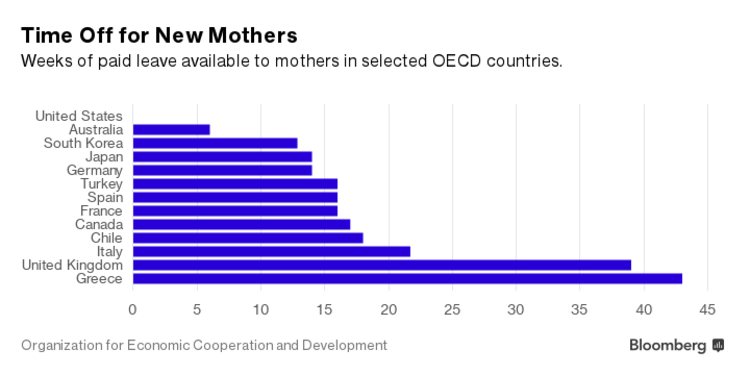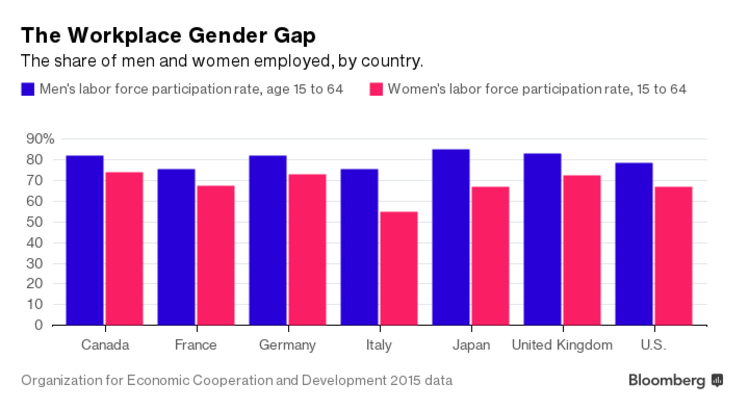Motherhood is changing, as are mothers' working lives—and those changes have economists concerned.
For a while, women around the world were making clear economic progress. More of them were working, and they were earning more (and boosting the global economy in the process).
But in the past few decades, that progress has stalled. Women's participation in the U.S. workforce peaked two decades ago. And today, women are making big changes to when, and whether, they have children.
Economists have begun paying attention. Last week, Federal Reserve Chair Janet Yellen raised the alarm in a speech at Brown University. "We, as a country, have reaped great benefits from the increasing role that women have played in the economy," she said. "But evidence suggests that barriers to women's continued progress remain."

Among those barriers: "a lack of equal opportunity and challenges to combining work and family."
Since the demands of parenting are a key factor keeping women out of the workforce, Yellen and other economists are focusing on the barriers that parents, especially mothers, face—among them the high cost of child care and a lack of workplace flexibility. "To keep women and men productive in the labor market, it is a good idea to have supporting institutions that can ease some of the burdens of both single parents and married couples with children," said Torsten Slok, chief international economist at Deutsche Bank.

For now, though, women around the world are much less likely than men their age to be employed—and American women are less likely than women in many European countries to work.
Those gaps carry an economic cost, for women as well as for the U.S. and global economies.
From 1948 to 1990, the surge of women into the workforce boosted the U.S. economy's potential growth rate by 0.5 percentage points each year, Yellen said in her speech. Other research suggests the U.S. economy would expand 5 percent if as many women were employed as men. Japan's would increase 9 percent, and Egypt's 34 percent.

That's growth the world can't spare at a time when other factors, such as aging populations and low productivity increases, are holding economies back.








